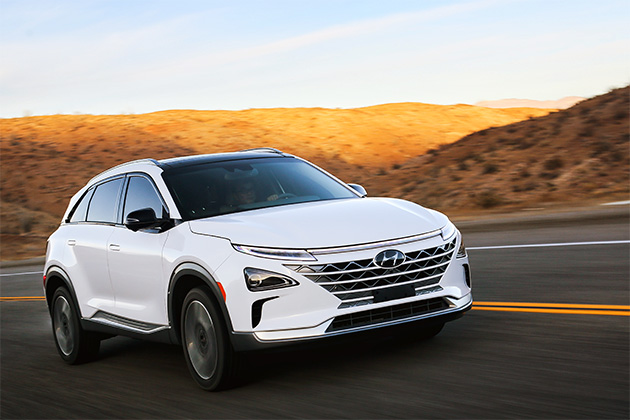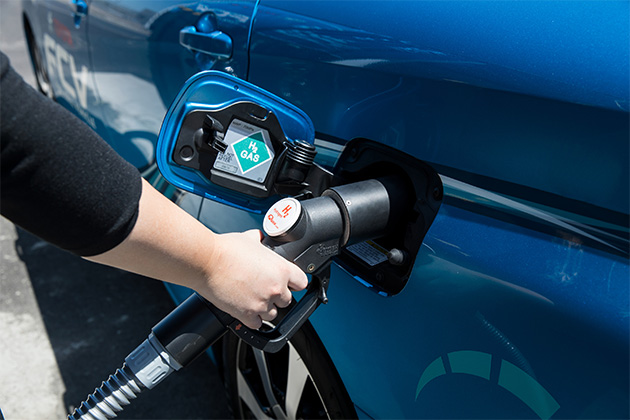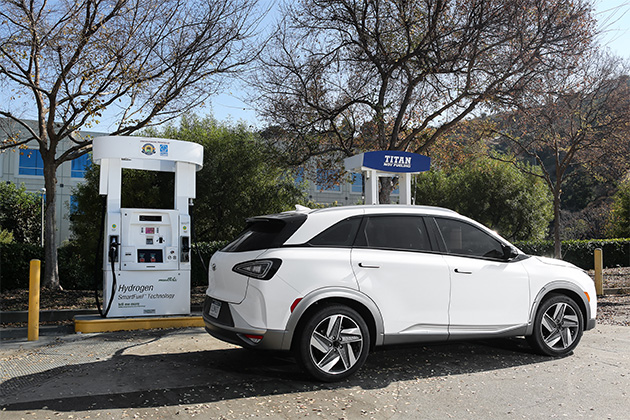21 February, 2018 By: Glenn Butler
A car that runs on the most plentiful element in the universe and emits only drinking water sounds like science fiction or fantasy, but its real and it’s on its way to Australia.
The ACT Government has already ordered 20 Nexos, scheduled to arrive sometime over the next 12 months, to use as part of its Renewable Transport Fuels project which uses a wind farm to extract from water the hydrogen required to run the vehicles.

Hydrogen power has been researched for decades - as far back as 2004 Perth ran a three year trial of hydrogen buses that went nowhere.
The Nexo is an indication that manufacturers, including Hyundai, Toyota and Honda have cracked the hydrogen code and can bring the long-touted technology to the broader market.
“Hydrogen cars are no longer future technology," says Scott Nargar, Hyundai’s environmental spokesman.
“It’s here today. The cars are ready”.
How it works
The basic principles of hydrogen power are easy to understand and offer benefits over petrol and electric vehicles.
Unlike petrol, hydrogen does not actually fuel the vehicle, but acts as a storage medium for electrical energy like a battery.
The Nexo’s on-board fuel cell stack uses a chemical reaction to strip the hydrogen of its electrons, which gives the car its electric power. The used hydrogen is then combined with oxygen and emitted from the tailpipe as water vapour.
Because only water vapour is emitted, there are emissions, but they are not harmful.
Much like an electric vehicle (EV), hydrogen cars provide a quiet ride, but unlike today’s EVs refuelling is fast — a nozzle is simply attached and the tank filled with hydrogen in around three minutes, about the same time it takes to pump 80 litres of petrol.

Although hydrogen cars need batteries to store electricity, they get away with lighter and cheaper battery packs than required by EVs.
The Nexo, says Hyundai, can do 800km on a single fill and with hydrogen prices at around $16 per kilo, costs just under $90 to refill the 5.5kg tank.
Enjoying this article?
Sign up to our monthly enews
Cost and infrastructure
So why are we not all driving hydrogen cars with their many benefits? The two main reasons are cost and infrastructure.
Toyota, Hyundai and Honda have been selling hydrogen-powered cars in California, Japan, Korea and Europe since 2013.
As of January 2018, America had 118 hydrogen fuelling stations, mostly in California, Europe had 63 and Japan had 50.
There’s only one hydrogen refuelling station in Australia at Hyundai’s Sydney headquarters, and it’s not for public use. In comparison there’s just under 6000 stations selling petrol, diesel and LPG.
“We need the infrastructure in place to fuel the vehicles. If there are stations available — and we need to see more than just one in each big city — there’s no reason why you couldn’t look at [launching] a car in the next couple of years,” says Nargar.

Hydrogen versus electric vehicles
However there are plenty of detractors of hydrogen cars and its technology too, including Tesla and electric vehicle flag waver Elon Musk who described Toyota and Hyundai “extremely silly” for investing so heavily in the technology.
Dr Thomas Braunl, professor of robotics and automation at the University of Western Australia, says hydrogen-powered technology is not comparable to electric.
“Originally it was the shortcomings of electric vehicles (EVs) around their limited range and long charging times that created the appeal for hydrogen cars.
“However both have now been overcome. On top of this, EVs can be charged at home or wherever there is a power point, and may be charged for free if home owners can use energy from roof-top solar installations.
“Hydrogen, on the other hand, requires a lot of energy to generate, truck to a service station and eventually burn in a fuel cell, almost twice the amount of energy compared to storing it directly in an EV battery."
“Hydrogen also requires expensive bowser systems and in-car fuel cells, and of course is highly explosive.”
Mercedes-Benz is another that has turned away. Having joined 14 other companies on the Hydrogen Council in early 2017, the company now takes a different view.
"In the last five, six, seven years, battery electric vehicles have developed much faster, much further than we expected,” CEO Dieter Zetsche told Australian journalists.
"For that reason, I think it's smart to focus on battery electric vehicles."
For those like Hyundai that are putting their eggs in to the hydrogen basket, the contest between hydrogen and EVs is irrelevant.
“Both hydrogen and electric are zero emission drivetrains which we should be supporting,” says Nargar.
“We should be talking about who’s going to be the winner out of internal combustion and zero emission. Electric and hydrogen fuel-cells are the future.”
Enjoy this story? Get more of the same delivered to your inbox. Sign up to For the Better eNews.
If your car runs out of puff, RAC Roadside Assistance can help.
From just $2^ per week you can have peace of mind with RAC's 24/7 Australia-wide breakdown service* provided by expert mechanics. You even get access to great member benefits like savings on fuel, shopping, movie tickets and more.
^Total cost of Standard Roadside Assistance is $112.36 inclusive of 6% admin fee applied to quarterly direct debit. Prices are per year.
*24/7 attendance is available in the Perth metro area plus, Albany, Bunbury, Busselton, Kalgoorlie and Geraldton. All other areas are subject to availability.
